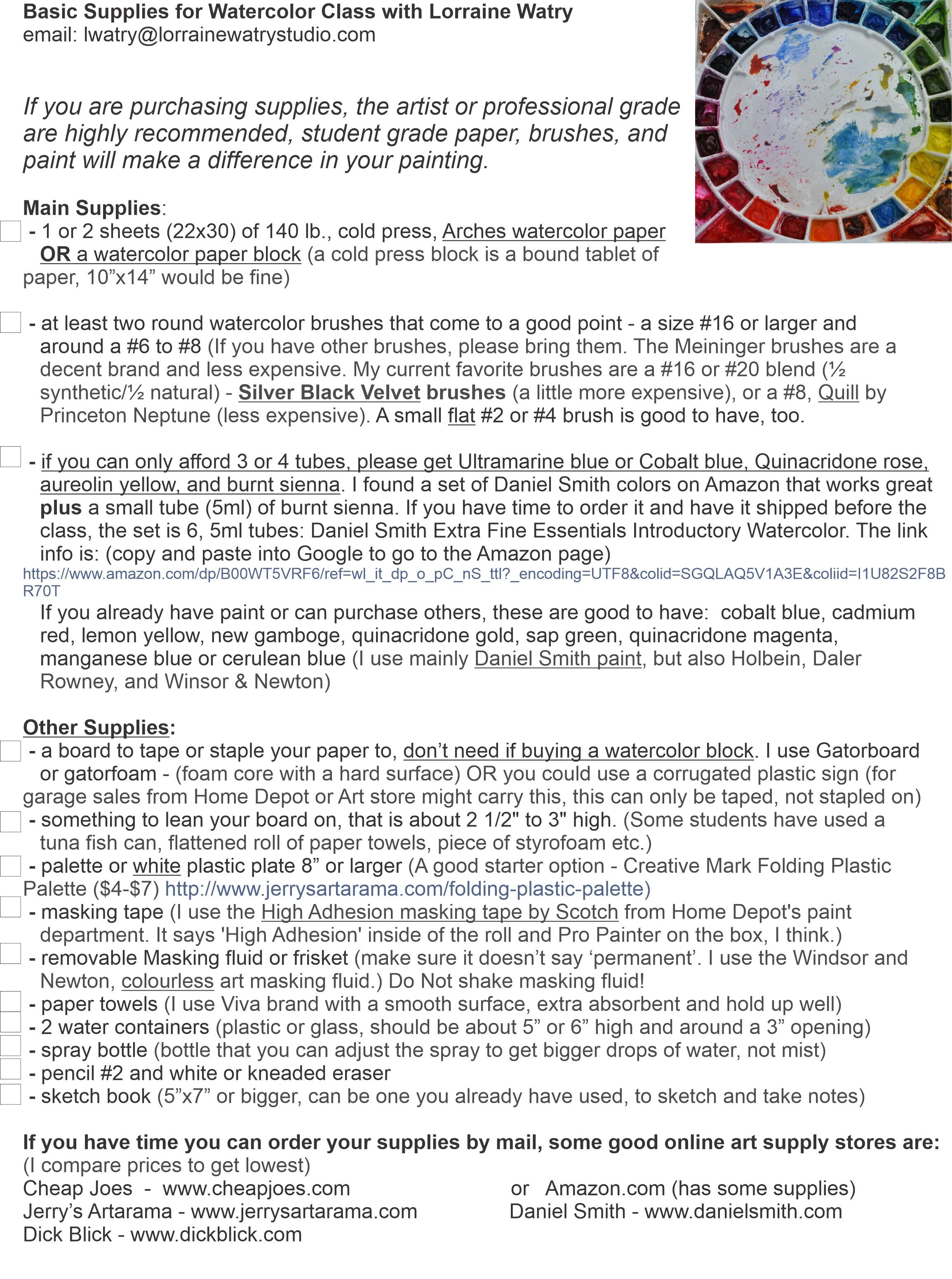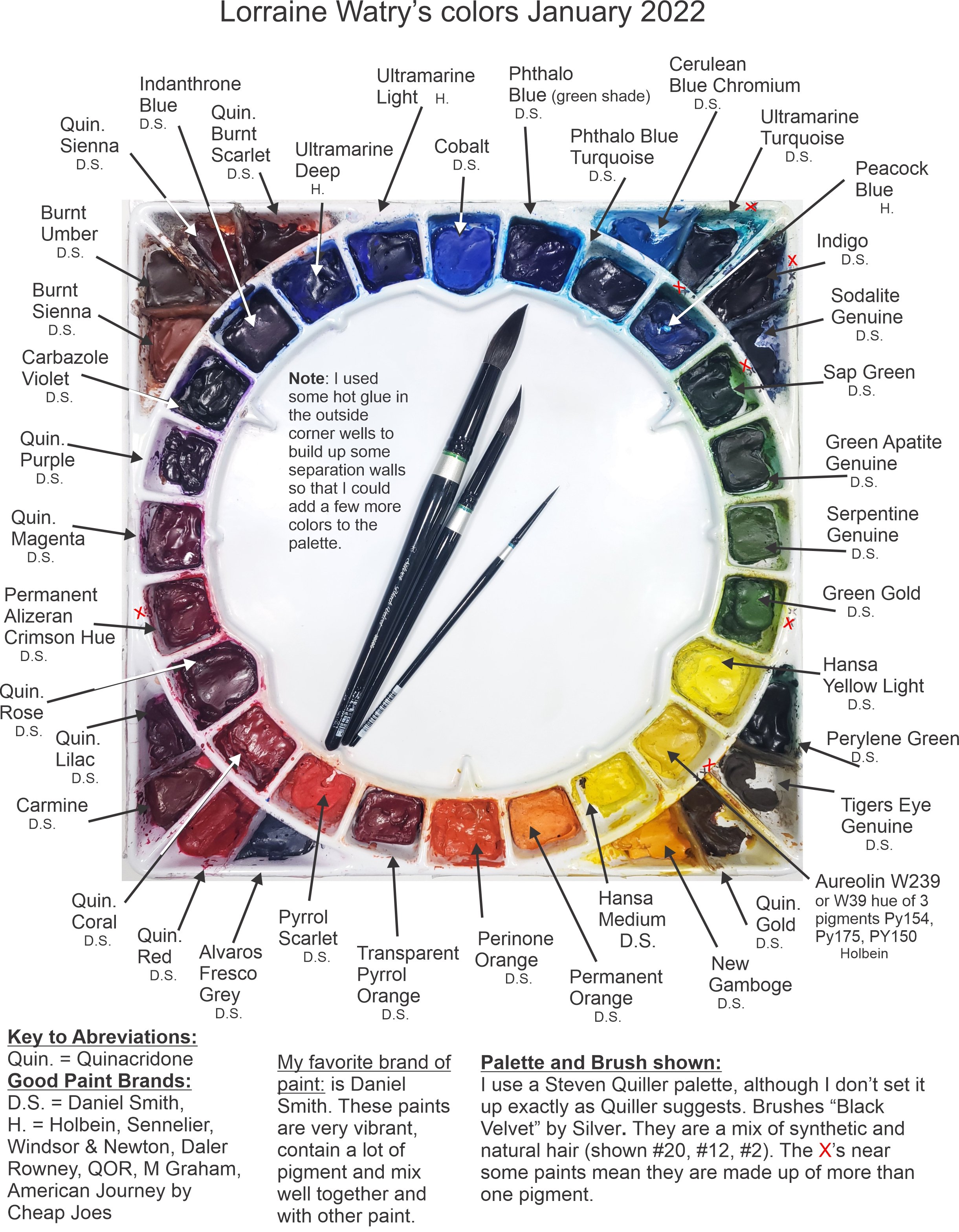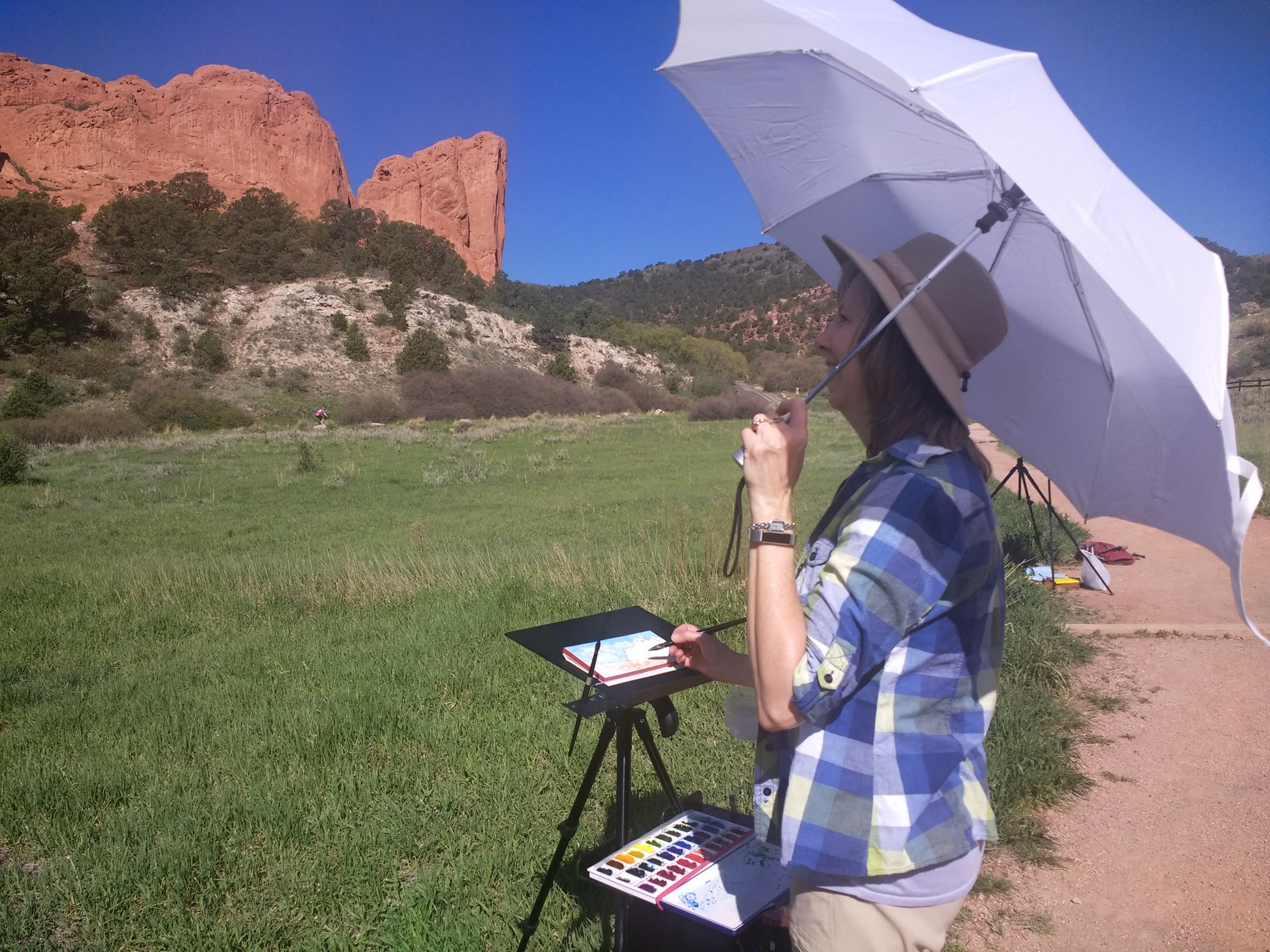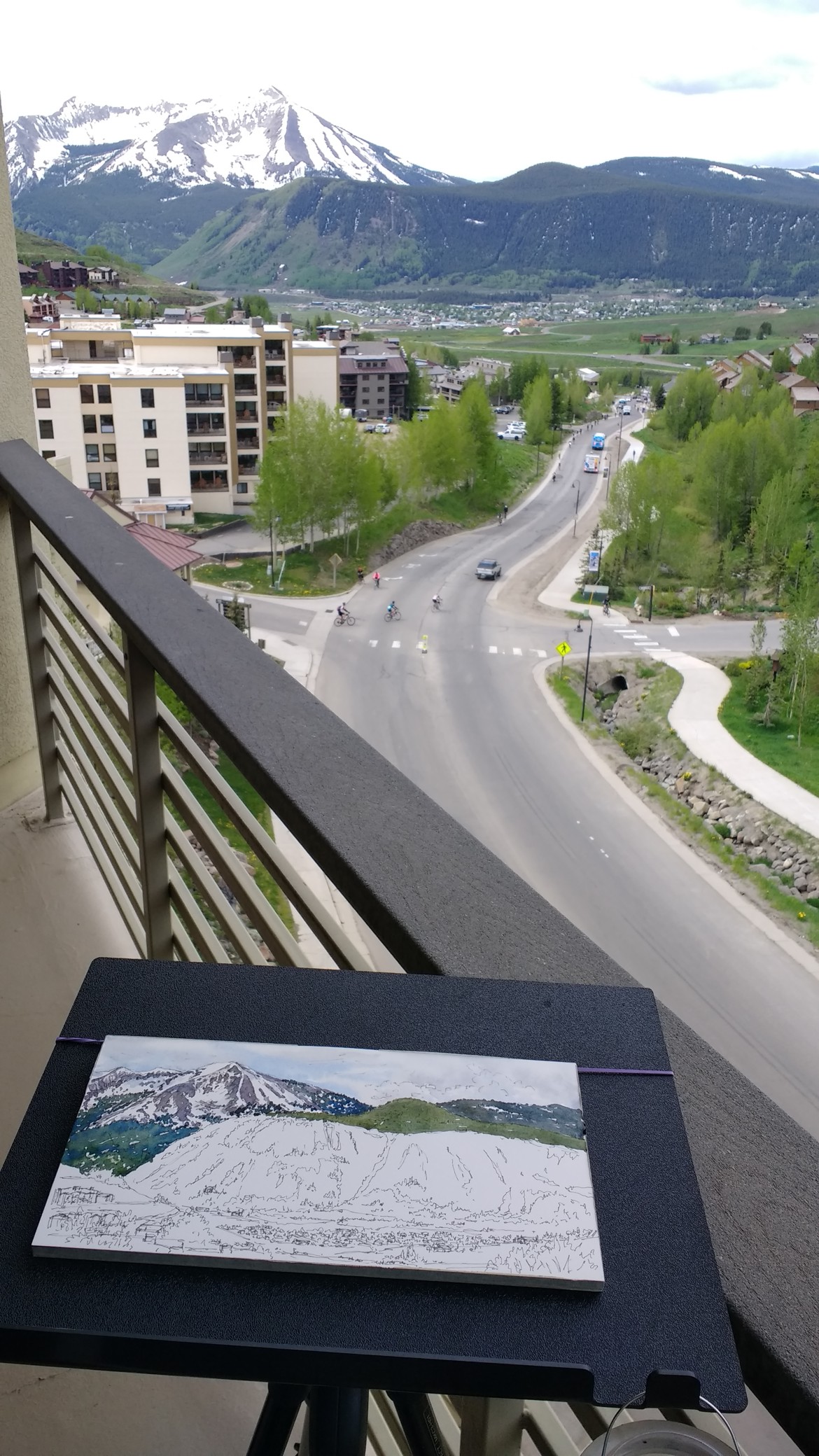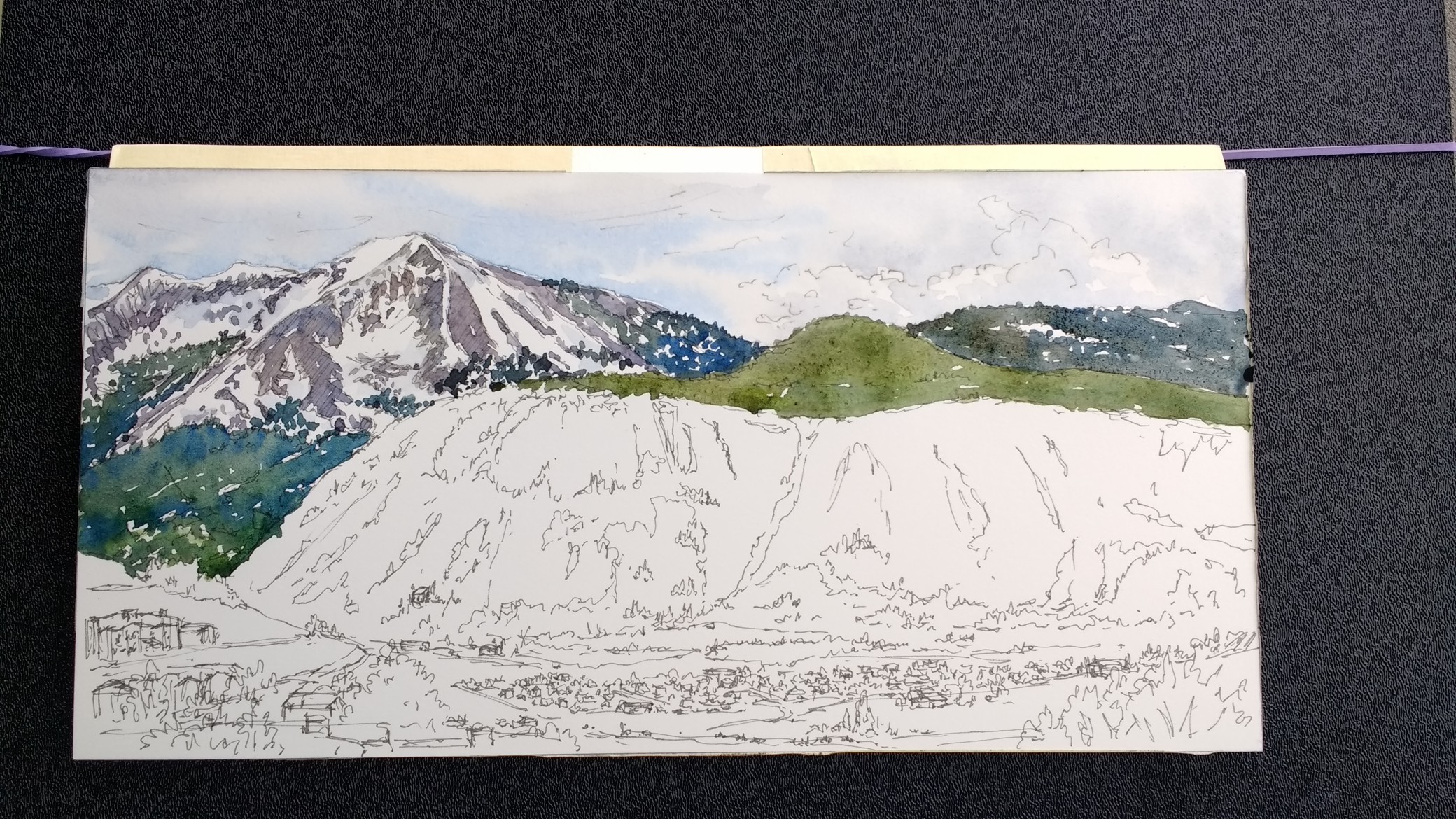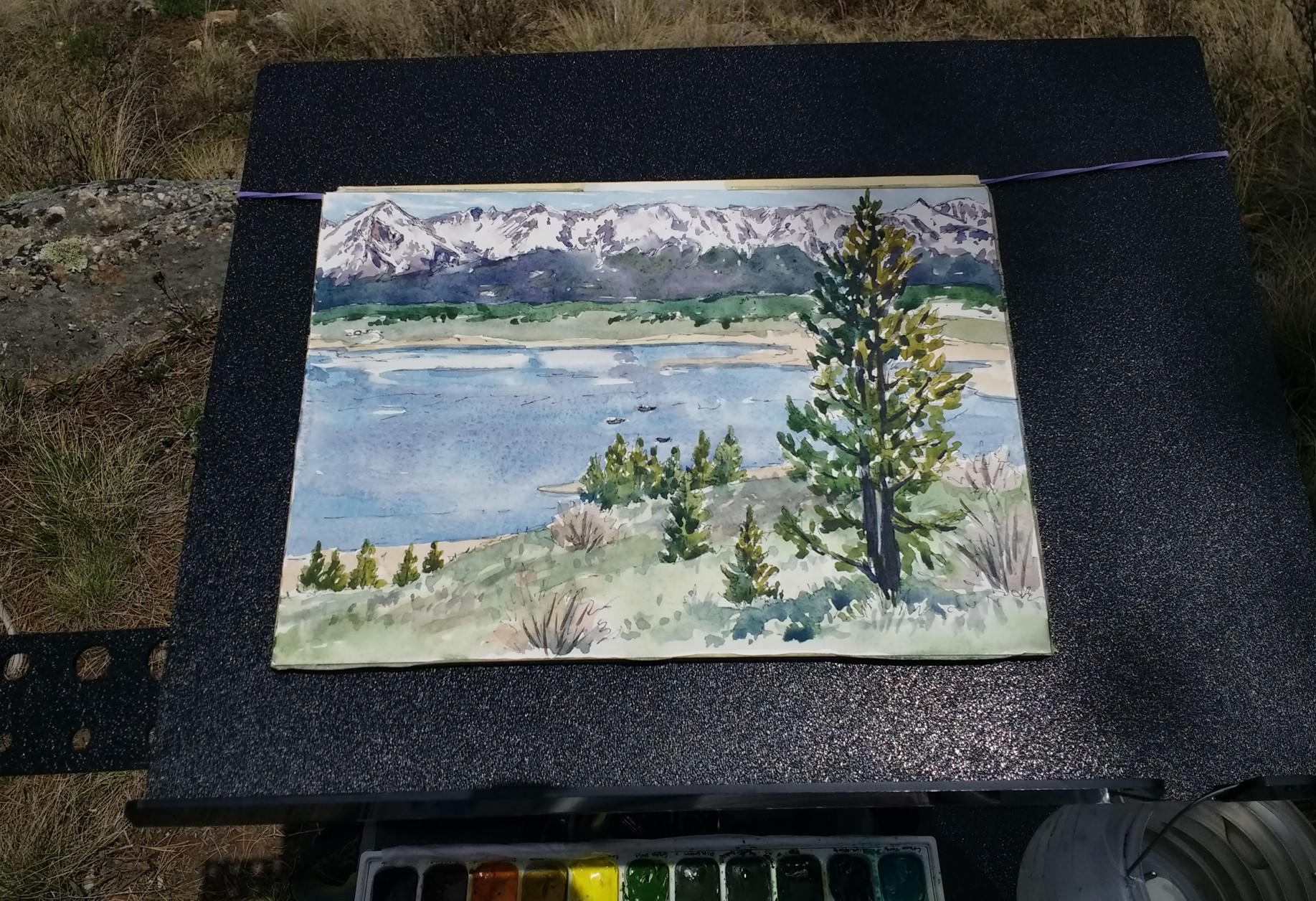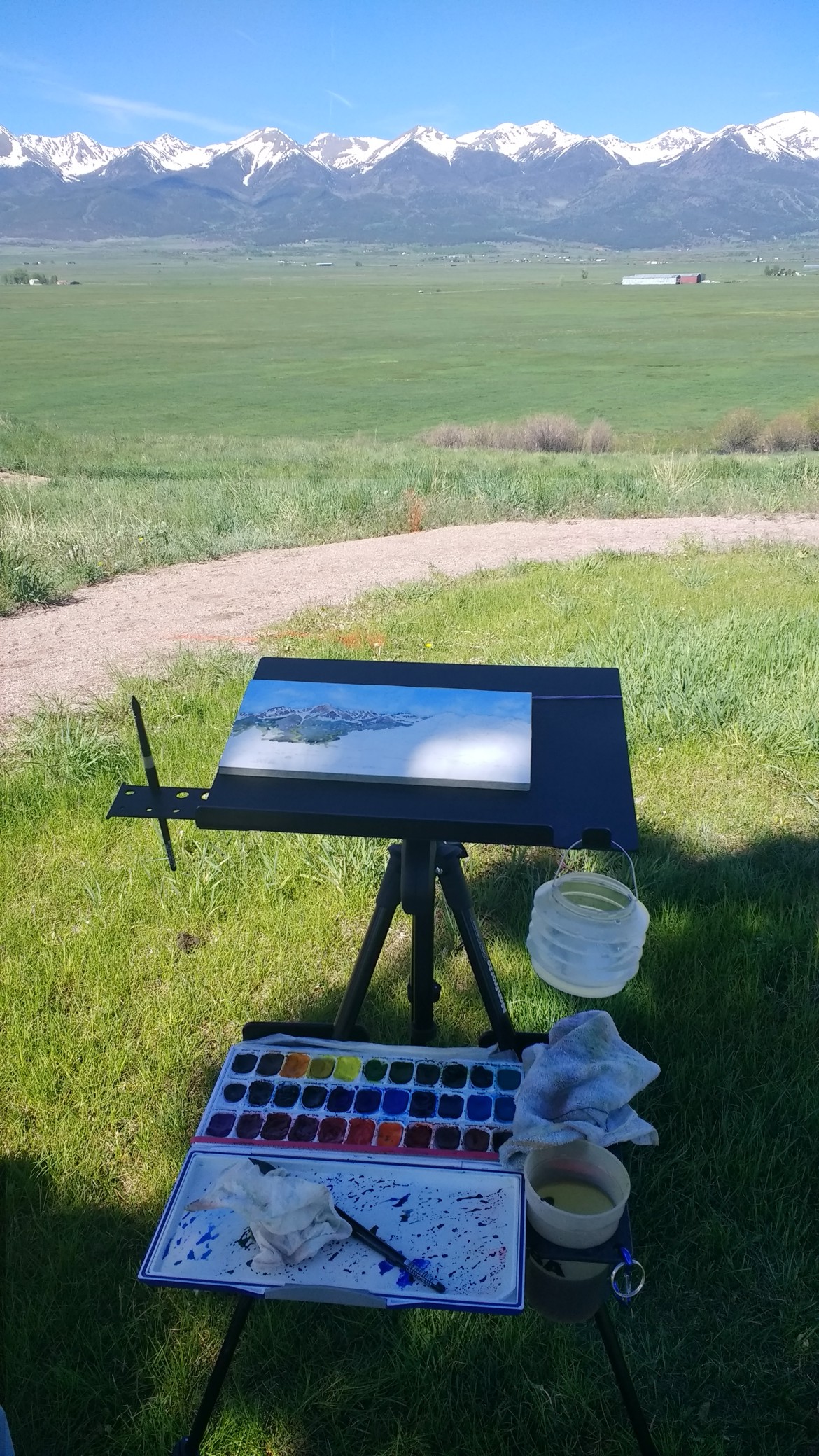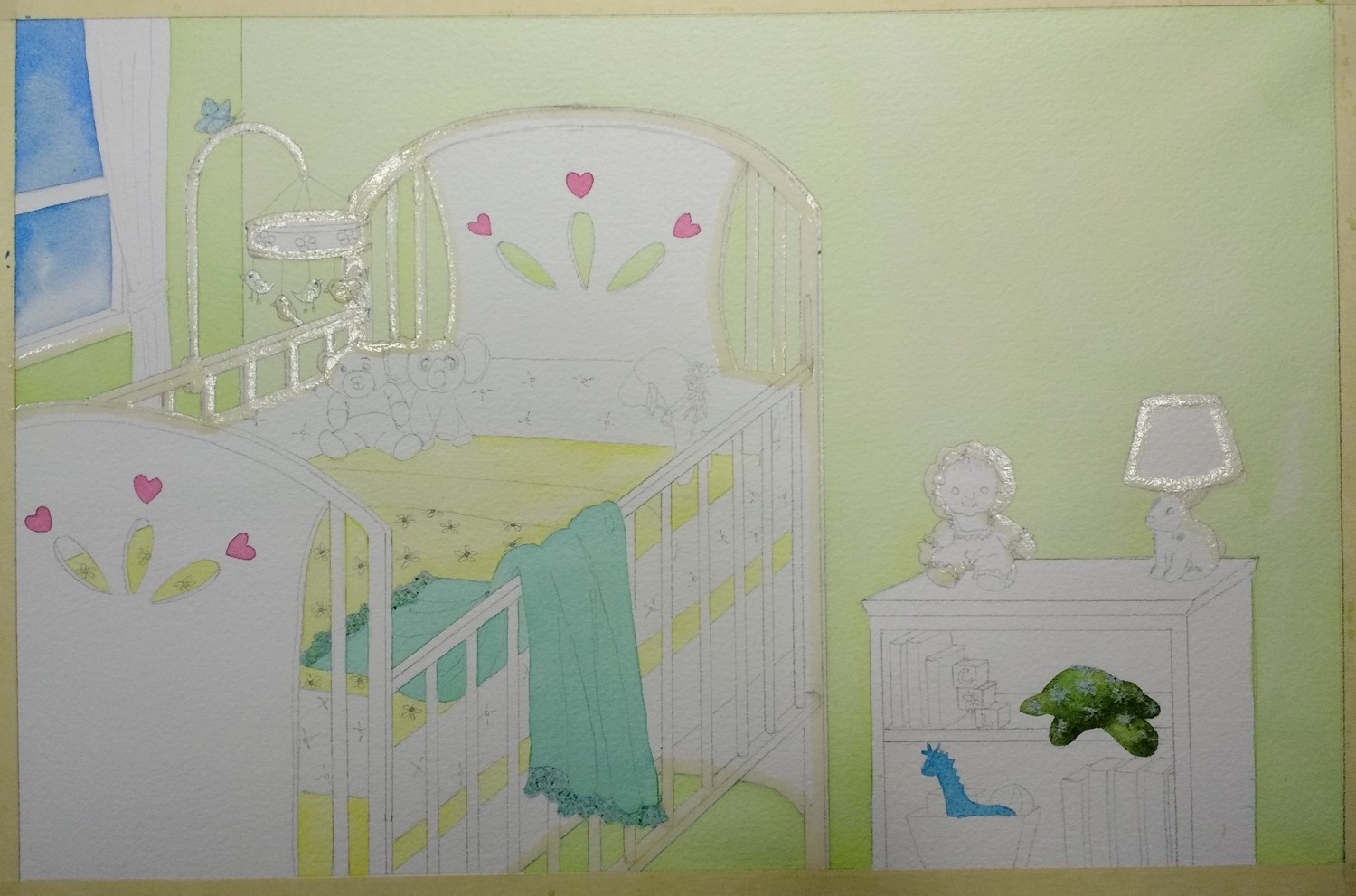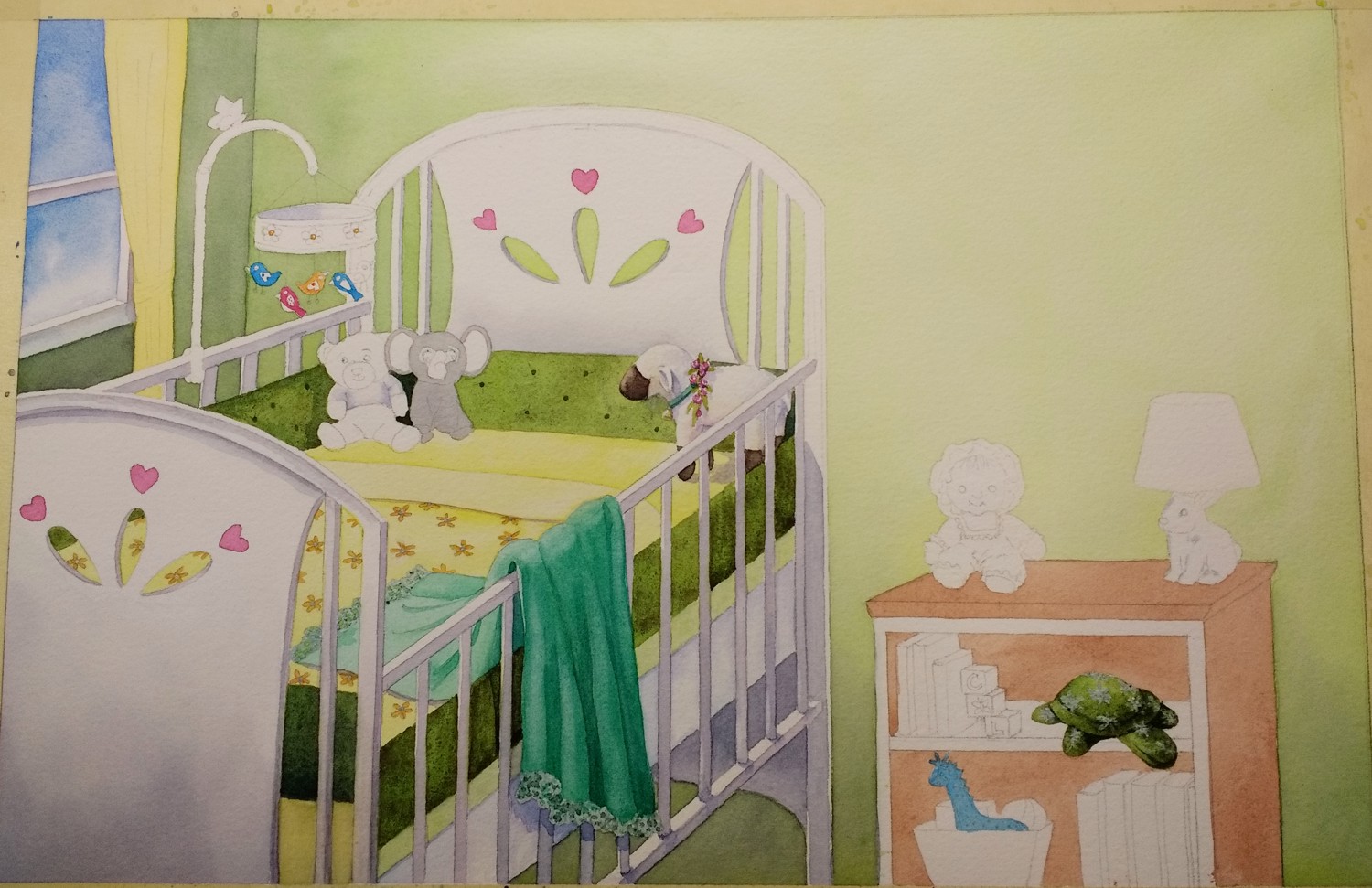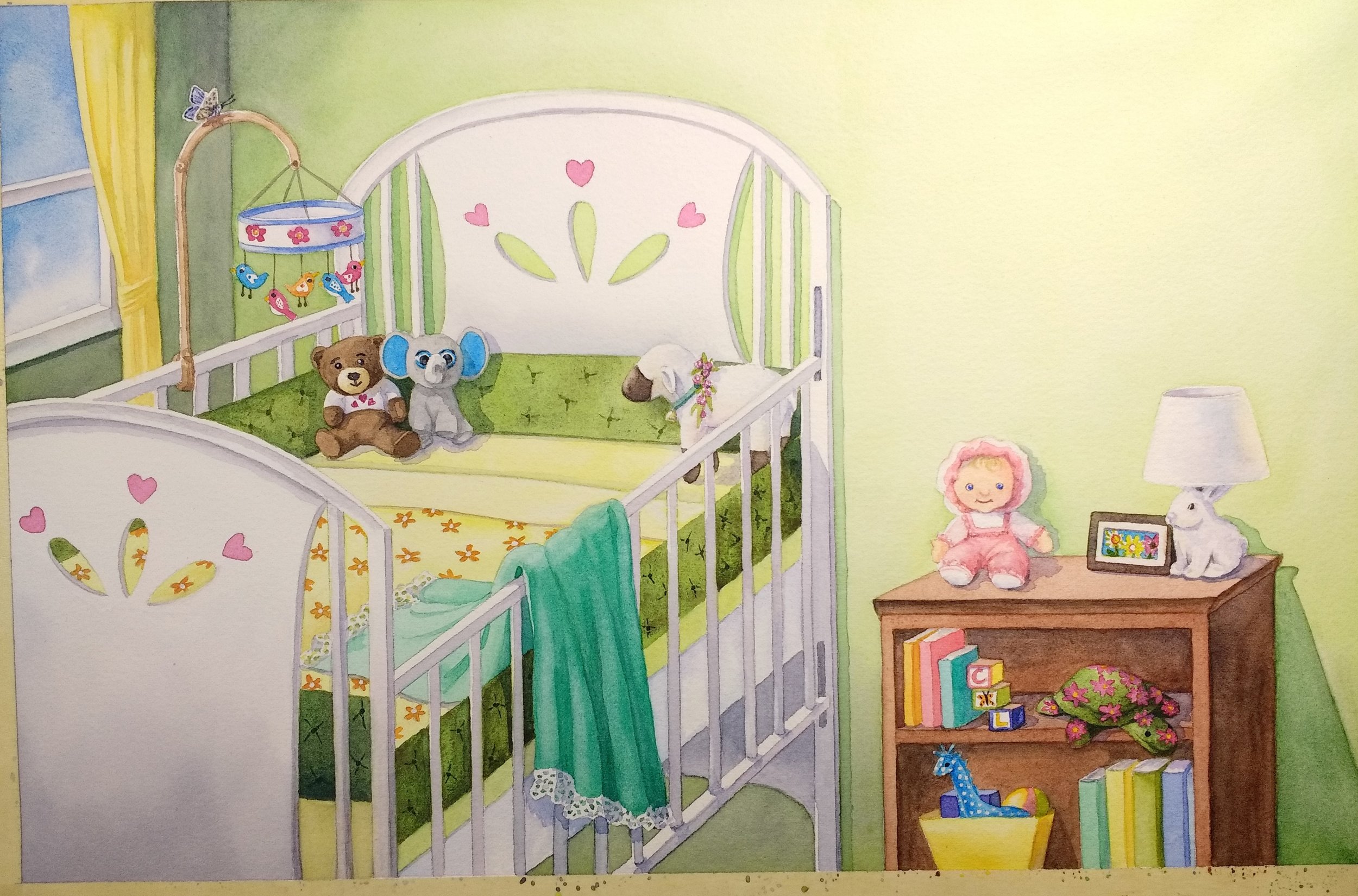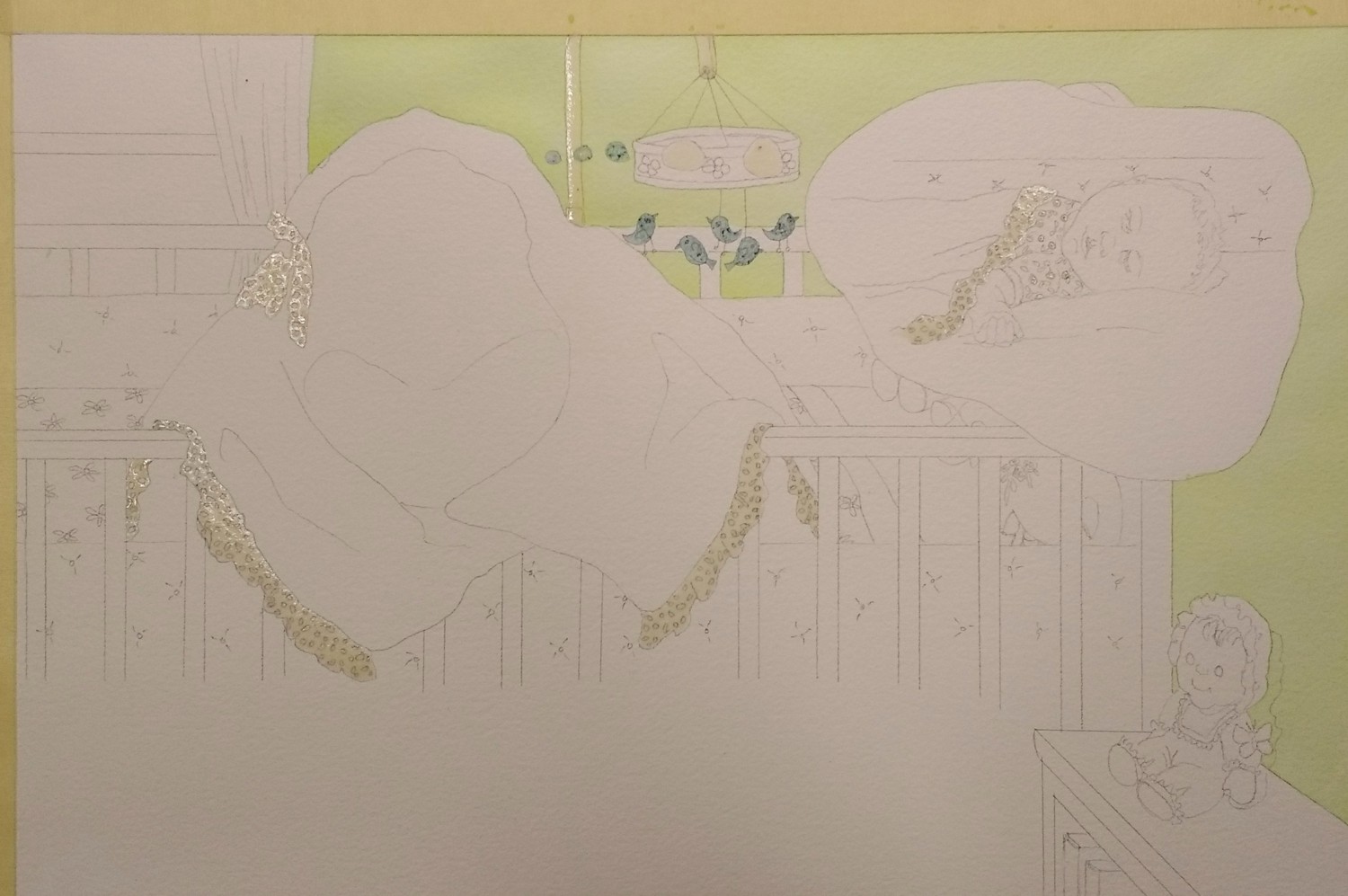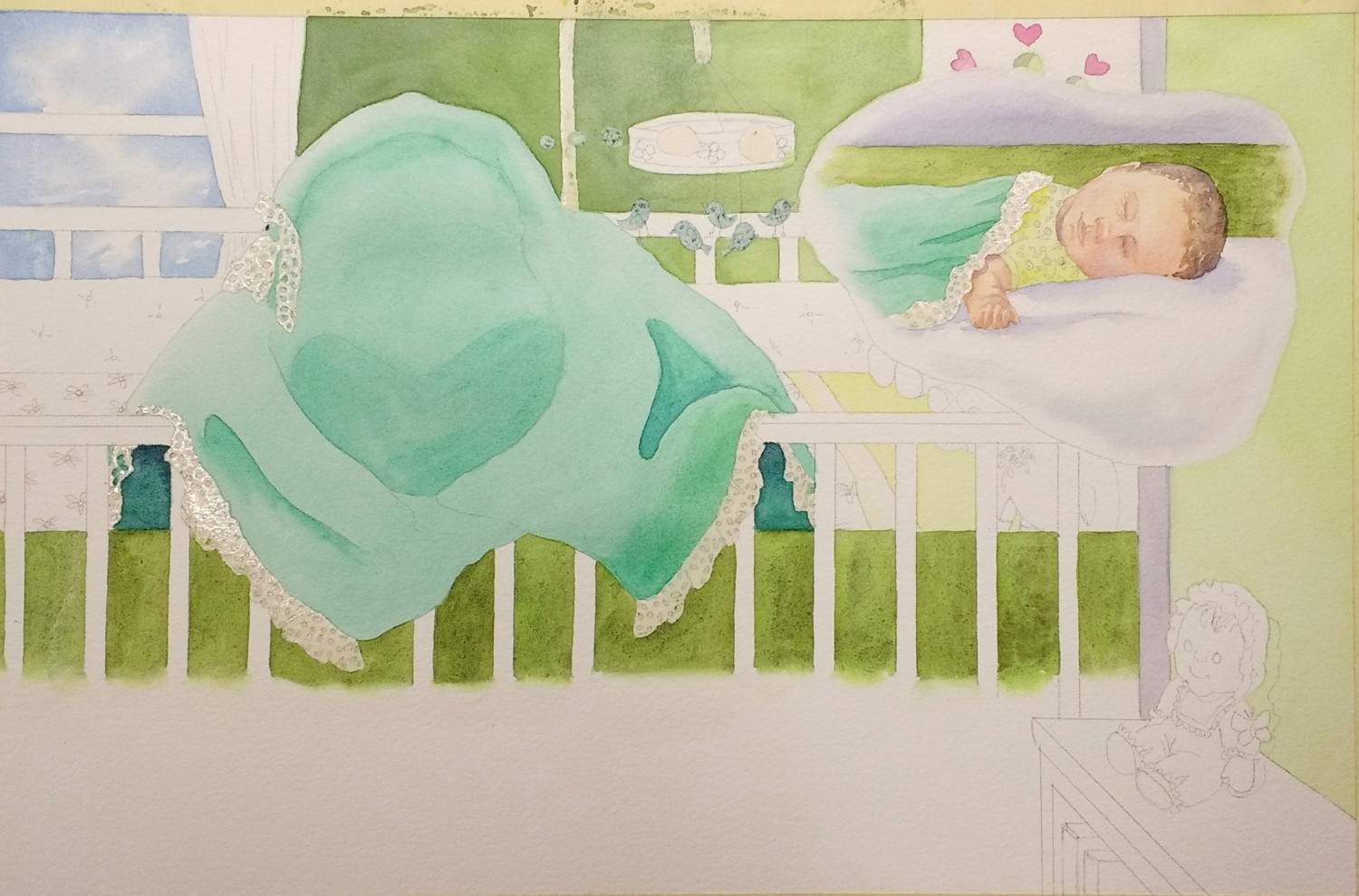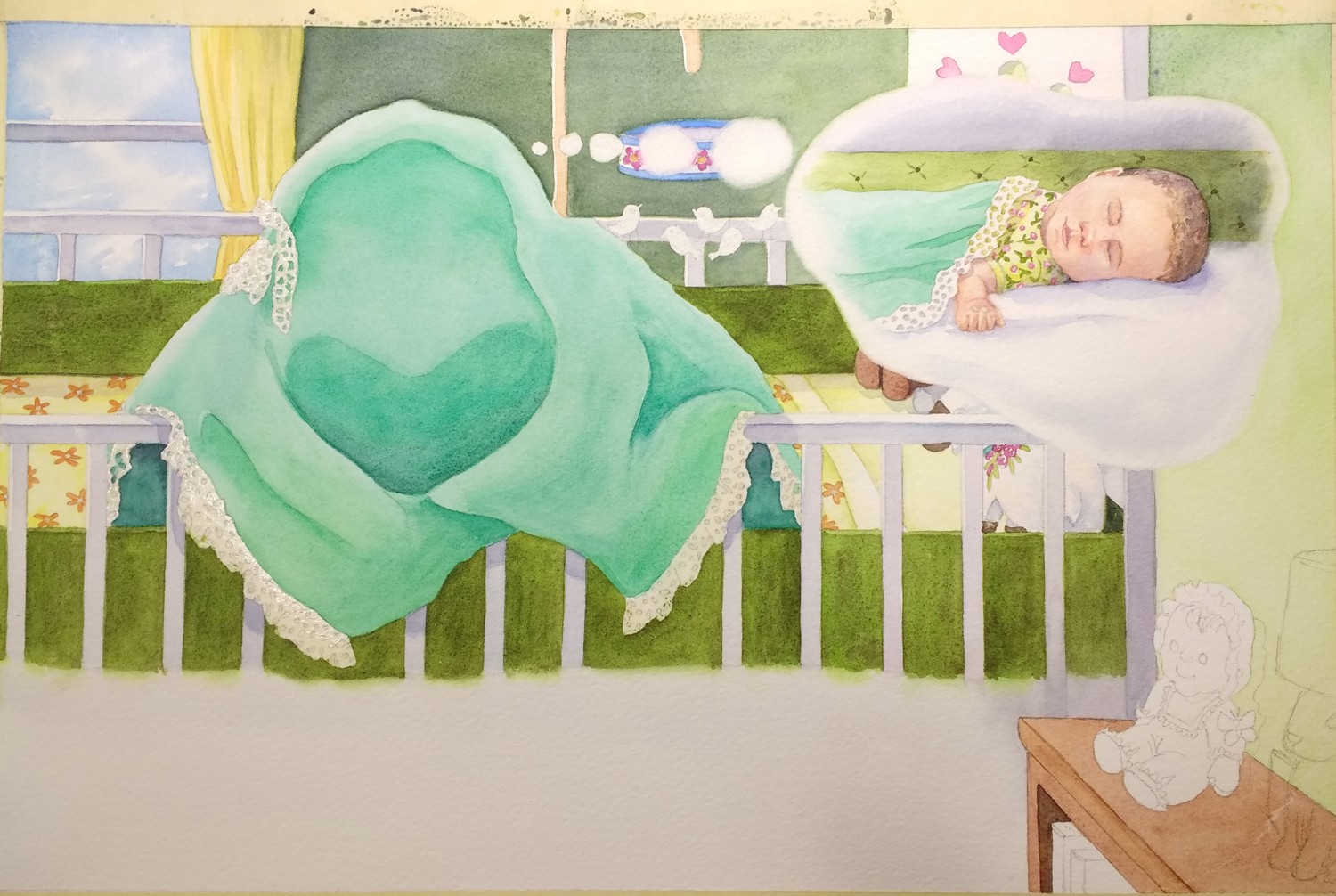How I Layout My Palette:
Stephen Quiller has a method to layout this palette with specific colors that he uses in his paintings and that work well for making mixes. I, however being the rebel I am, don’t use the palette with Mr. Quiller’s setup or pigment choices.
I like this palette because of the large center mixing area and the number of wells (32) available for my paint. You may notice that there are more than 32 wells on the image above. I decided after using the palette for a while, that I could divide the corner wells by using some hotglue to create dividers. The lower left (red corner) shows the wells without the hotglue added. The other three show the extra wells I made to add 6 more wells. I drew a line with the hotglue, let it dry, and then added the next line of hotglue until I had the divider tall enough.
My palette colors have changed over time. I tend to keep using the same colors for a year or two. If I haven’t used a color in that time, then I might change it out for something new. My palette slowly morphed into this layout with a few recent changes.
I lay out my palette with a color wheel in mind. The colors are in their color families - blues, greens, yellows, oranges, reds, etc. The longest pointed well at the top contains Cobalt blue. It is the color I use as my Primary blue. Others consider Ultramarine or Phthalo Blue as the primary blue. In the longest pointed Yellow well, I have Hansa Yellow Light as my Primary Yellow (in place of Lemon Yellow), and Quinacridone Rose in the Primary well for the reds.
Then I lay out the other colors between them. ‘Warmer’ reds are on the right side of Quinacridone Rose toward the oranges and the ‘cooler’ reds are on the left side of Quinacridone Rose toward the purples. I continue this process for the other color families. There are a few oddball colors in the corners, like some browns and dark colors like Indigo and Sodalite Genuine.
The Pigments I use:
Most of the pigments I have on my palette now are from Daniel Smith. I also have a few pigments from Holbein. I used to use a variety of brands, but over time slowly changed to Daniel Smith because I like how easily their paints re-wet after drying, how full of pigment they are, and the large variety of colors. The Holbein colors I have on my palette are ones that Daniel Smith doesn’t have or that I like better in the Holbein brand for various reasons.
I have noted under each of the pigment names what brand they are with a D.S. for Daniel Smith and an H. for Holbein.
The other aspect of the pigments on my palette is that they are transparent to semi-transparent. I don’t like to use opaque pigments because I like the transparency and glow of the paper through the paint.
Use This or Other Palette Layouts as a Jumping off Point:
I have created a YouTube video that goes over the layout of my palette, why I chose certain colors, and some of my favorite mixes. Here is the link for that YouTube video - Tip #17 My Watercolor Choices and Mixes.
I know some watercolor teachers that don’t share the colors they are using. They may not want to give away how they make their mixes or they want the students to investigate and learn what the pigments do without influence from the teacher.
I see sharing my colors as a jumping off point for students and I don’t mind sharing the colors that I like to use. I hope that the students will explore other pigments and find the colors and mixes that work best for them.

